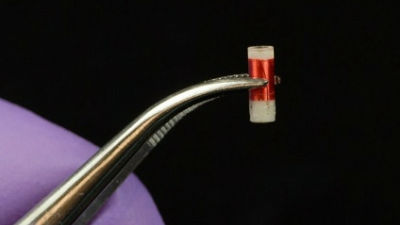Succeeded in creating a human cornea with a 3D printer, it can be created in a short time and at a low price, and a worldwide lack of cornea

About 10 million people worldwide,TrachomaIllness caused by eye diseases such as. In order to prevent this disease, it is necessary to do corneal transplantation, but there are limitations on the cornea that can be used for transplantation and there is a problem that the cornea is insufficient to save all people. Professor Choi Konnon and his colleagues, who are professors of genetic medicine at Newcastle University, have developed a solution to create the cornea and succeeded in creating an artificial cornea by using a 3D bioprinter.
3D bioprinting of a corneal stroma equivalent. - PubMed - NCBI
https://www.ncbi.nlm.nih.gov/pubmed/29772228#
First 3D-printed human corneas
https://medicalxpress.com/news/2018-05-3d-printed-human-corneas.html
In order to artificially create the cornea, the researchers used corneal stem cells extracted from healthy donorsAlginic acid,collagen, We succeeded in developing a solution "bio ink" capable of producing a cornea.
It is reported that this bio ink can produce a cornea within 10 minutes even when using an inexpensive 3D bioprinter, which has the merit of creating a cornea in a short time and at low cost. In addition, the research team has confirmed that the stem cells in the artificial cornea produced by the 3D bio-printer continue to live and has reported that it succeeded in culturing and proliferating the cells afterwards.

"We have been pursuing the development of ideal bio ink that many teams around the world can produce cornea with 3D bioprinter.This time we have developed a gel made with alginic acid and collagen Has sufficient rigidity to retain its shape while maintaining sufficient softness to squeeze it out of the nozzle of a 3D printer and furthermore it can hold the stem cells in a living state. The usefulness of the article.
In addition, artificial cornea generated by bio ink is generated by a 3D printer, so it is possible to change "size" or "shape" according to the patient's eyeball. The research team explains that if you scan the patient's eyeball in advance, you can generate the cornea according to the patient in a short time.
Mr. Connon says, "The cornea we created will need to undergo a lot of examination in the future and I think it will take several years before we can actually transplant, but our research is in the eye of the patient It shows that you can create a combined cornea and this approach has the potential to compete with worldwide corneal shortage. "
Related Posts:
in Science, Posted by darkhorse_log







